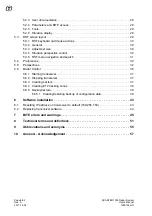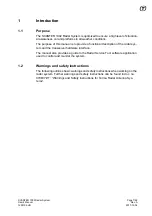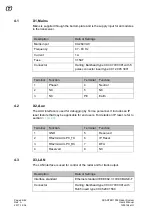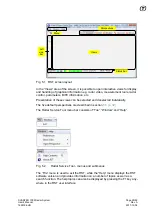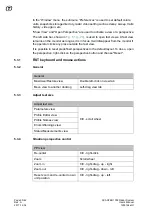
Page 16/62
Rev. A
2017-12-04
SCANTER 1002 Radar System
User’s Manual
1255194-HO
3.1
Software-defined functionality
Multiple types of SCANTER radars utilize identical core software, which enables a
high level of testability, ensures deployment flexibility and makes it easy to add new
functionality.
A variety of radar signal processing techniques are available. Multiple functions,
such as automatic adaptation to weather scenarios, etc. are performed simultane-
ously. This, in combination with the use of multiple, identical and powerful common-
platform processing modules, leads to the concept “software-defined functionality”.
The entire processing structure is defined by software and functions relevant for the
individual application and can be invoked as appropriate. It is also possible to
switch between different modes of operation by modifying both the synthesized
transmit waveforms and receive signal processing tasks, even on the fly. All set-
tings can be specified in a profile, making configuration easy.
In summary, the radar transceiver is configured to the application scenario, and
adaptation to the environment is highly automated.
3.2
SSPA - Solid State Power Amplifier
The SSPA - Solid State Power Amplifier - for SCANTER 1002 is part of the TR
Module in the transceiver. It is designed using state-of-the-art MMIC (Monolithic
Microwave Integrated Circuit) GaAs high-power amplifiers (HPA). The SSPA
amplifies the signal to be transmitted and produces 8 watt of Ku-band microwave
power.
The power sector mode feature allows the SSPA output power to be adjustable in
azimuth sectors or turned off. This is achieved by sector wise attenuating the input
signal into the SSOA from the transmitter.
3.3
Frequency diversity
One of the most difficult challenges for a GSR system is to separate a small target
from background clutter. In SCANTER 1002 this is achieved by a combination of
transmission diversity and intelligent signal processing.
The effect of the Terma SCANTER frequency diversity is to reduce fluctuation of
the echo from desirable targets, thereby enhancing targets relative to clutter. In
combination with coherent pulse compression and interference filtering, the radar
images become clear and well-suited for tracking.
A prerequisite for the frequency diversity is the ability of the transmitter to change
frequency instantaneously from chirp to chirp. The transmitter and receiver support
four sub-bands and can freely jump between these frequencies according to pre-
defined profiles.
The advantage of using frequency diversity is that the noise and clutter will be dif-
ferent in the frequency bands, while the echo from the target remains constant. This
means that the clutter can be cancelled by integrating echoes from different time
intervals and different frequencies.
Full benefit from the frequency diversity is obtainable only if dynamic characteris-
tics are adapted to actual weather and complex clutter situations.





